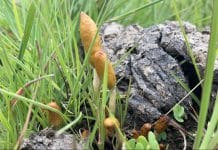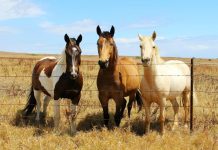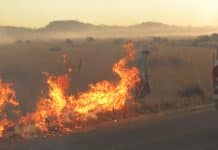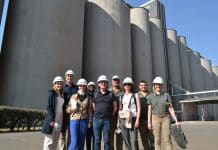Estimated reading time: 4 minutes
The Livestock Registering Federation’s 15th Stockman School at Aldam near Ventersburg in the Free State concluded on a high note with a Namibian stud breeder being honoured for his contribution towards the red meat industry and cattle breeding.
A stud breeder of note
Heintz Gruhn, owner of the Otongovi Hereford Stud in Namibia, won the Molatek / Veeplaas / Breedplan Stud Breeder of the Year Award during the LRF’s gala event on Thursday evening, 12 October. Gruhn told AgriOrbit that he is deeply honoured and humbled by this award, and although he is not new to the competition it remains a proud moment for him and his wife, Almut, whom he considers to be his pillar of strength.
Read more about the second day of the LRF Stockman School here.
Gruhn was the runner-up in 2014 and 2022 when another Namibian stud breeder, Bianca Lueesse, won the award with her Lichtenstein Simmentaler stud. Gruhn earned this award for a number of reasons. According to competition judge, Prof Frikkie Neser, academic head of the Department of Animal Wildlife and Grasslands Sciences at the University of the Free State, Gruhn’s herd actually serves as a link between a number of herds across the world, in an international genetic evaluation. This makes his an important herd worldwide. Gruhn managed to develop his stud to the highest level in the past 26 years and achieved a grading from 4,5 to 5 stars in the Breedplan evaluation system.
Bull selection
During the last day of the Stockman School, Paul Williams, technical extension services officer at the Agricultural Business Research Institute (ABRI) in Australia, focussed on selecting bulls for improved carcass traits. He explained how these carcass traits are being captured in the Breedplan system. Trait measurements are divided between live ultrasound scanning and abattoir evaluations, and Australian results have shown a good correlation between EBVs and carcass evaluation results.
Williams added that while some Australian breeds have been following this route for a while, South Africans are encouraged to put in more effort in their trait data collection.
Read more about the first day of this year’s Stockman School here.
Stock breeding – an investment
Kobus Bester, owner of the Vleisberg Simbra Stud near Ventersdorp in North West, focussed on Breedplan sale catalogues and said breeding stock should be regarded as an investment rather than a commodity. Before investing in livestock, breeders should do their homework properly by thoroughly assessing a sales catalogue. He mentioned that some LRF breeds have developed breeding indices to the benefit of potential buyers.
Performance testing a must
Prof Frikkie Neser unpacked the true value of using performance tested stud bulls, and urged breeders to avoid using untested commercial bulls because it can land them in deep trouble that is not worth saving a little bit of money when buying an untested bull. He said breeders should rather use a properly performance-tested bull from a reputable breeder and which suits their environment.
He also urged breeders to spend time to identify a selection goal and factors that need to be considered in their selection programme, including a balance between performance and physical appearance. Traits must also be of economic importance, while breeding values should be utilised and genetic correlations taken into account. He implored breeders to avoid single trait selection as it influences an animal’s profitability.
Farming with grass
Dr Louis du Pisani, well-known specialist agri-consultant, focussed on increasing profitability through improved rangeland and soils. He stressed the interrelationship between healthy soils, healthy plants, healthy animals and ultimately healthy humans. Soil health, he said, is dependent on photosynthetic processes, which in turn are dependent on water. – Christal-Lize Muller, edited by Izak Hofmeyr and WA Lombard, Plaas Media









